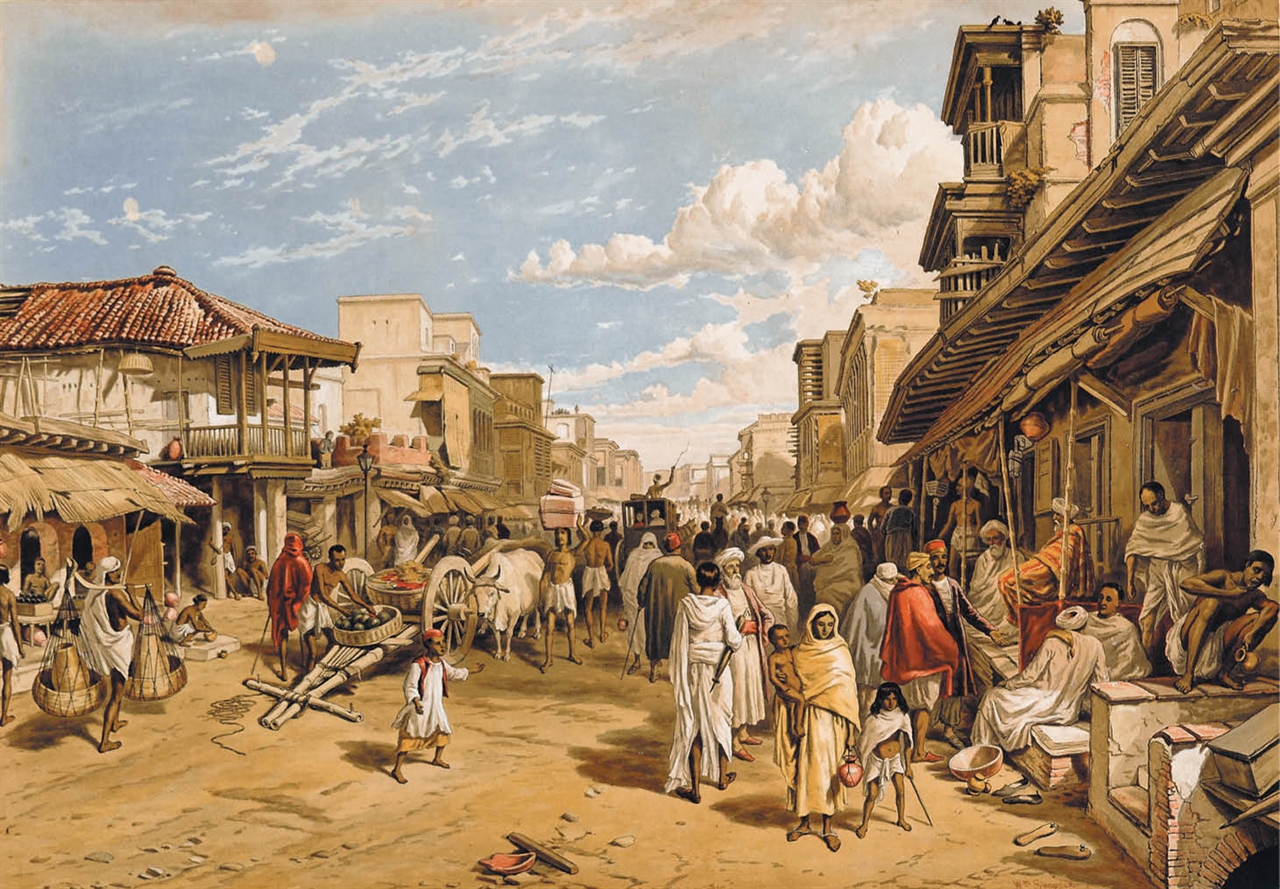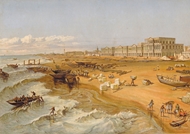![]() Antiquarian Books, Maps, Prints & Photographs - I
Antiquarian Books, Maps, Prints & Photographs - I
![]() Antiquarian Books, Maps, Prints & Photographs - I
WILLIAM SIMPSON (1823 - 1899)
Antiquarian Books, Maps, Prints & Photographs - I
WILLIAM SIMPSON (1823 - 1899)
RELATED LOTS
CONTACT US
Catalogue & Viewing
Lot Closed
Accounts & Shipping
Lot Closed
-
Details
 Details
Details
A view of THE CHITPORE ROAD (CALCUTTA) from the “India ancient and modern” Vol I plate 3, Chromolithographs by Day & Sons after William Simpson: Published by Day & Sons, Gate Street, Lincoln’s Inn Fields, London 1867.
-
Literature
 Literature
Literature

WILLIAM SIMPSON (1823–1899)
William Simpson was born in humble circumstances in Glasgow at about the same time that William Day’s lithographic press in Lincon’s Inn fields was being established. Nearly 30 years later, in February 1851, Simpson, who had worked as an assistant in printing workshops in Scotland, arrived in London. In his autobiography (written mainly so that his only daughter might know of her father’s life), Simpson re–marked: ‘I knew that Day and Sons were the principal lithographers in London, more particularly for artist work, so I settled to apply to them first…I presented myself there and saw William Day, one of three brothers, the principal person in the firm. I was at once engaged to begin work next Monday in the firm, as Simpson explained.
In early 1859, he commissioned Simpson, who had already made a reputation as war–artist of the Crimea, to visit India and to record the places affected by the events of 1857. Before leaving England, Simpson spent ‘a considerable time in the library of the India House, then in Leadenhall Street, looking over books about India, such as Daniels’, to see what had been already done, and to get hints as to places I ought to visit. India, such as Daniels’, to see Rajasthan: ‘It was rather a wild thing to go off all by myself for some weeks in this Simpson decided to see Rajasthan: ‘It was rather a wild thing to go off all by myself for some weeks in this way, but I thought it could be done, and as I should be able to traverse a large region, it was worth the risk. In this journey at times, for a week or so, I never saw a European…the ordinary traveler who chose India sees Bombay, Calcutta, Benaras, Agra and Delhi, but the vast spaces between these noted places he sees nothing of. It is in these spaces that the real India exists.’ Simpson took about 10 servants and only the basic needs for the journey. His bearers carried him at night while he slept in the dhooly (a cot suspended from poles); when they rested during the day, he would sketch. In February 1862, he embarked on the P & O steamer jeddo band for England.
Simpson also spent the next four years working up his sketches into finished water colours for publication by Day & Sons, without the knowledge that the firm was heading for bankruptcy, By 1866, Simpson had already delivered 250 water colours to the firm, which were sold off as bankrupt stock; only about 50 of the watercolors had been prepared as chromolithographs, and these were published in 1867 under the title ‘India ancient and modern', with a text by Sir John Kaye. For Simpson it was no consolation:’so the great work on India, on which I had bestowed so much time and labour, never came into existence, and I lost the honour and reputation which would have been due to me if such a work had been properly produced and published.’ If this had been so, William Simpson’s work would have ended the era of prints of India on a scale similar to that on which it had begun with select views by Hodges and the Daniell’s’ oriental scenery.



